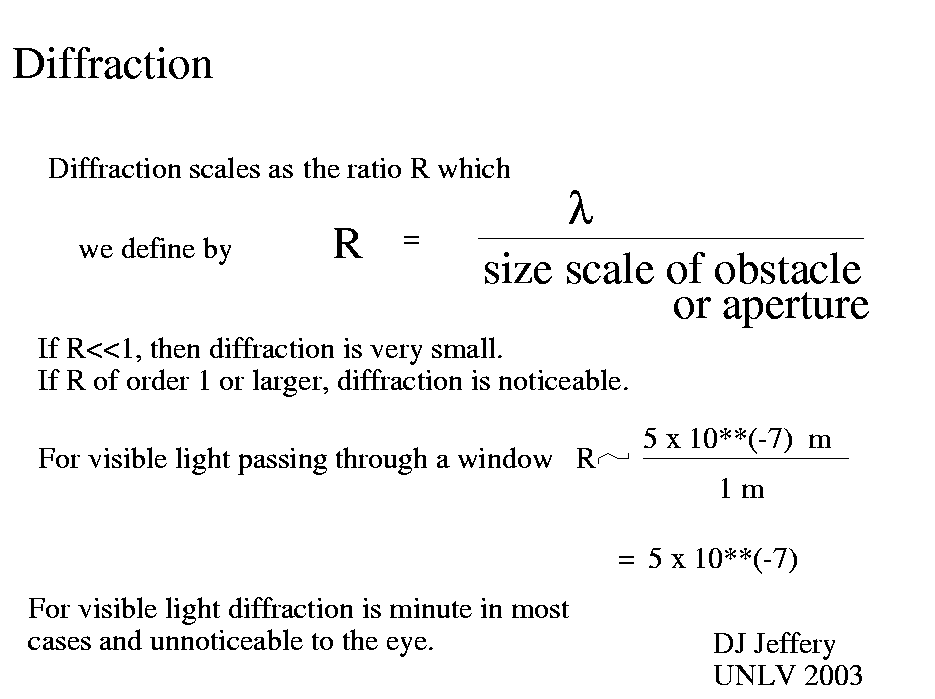
Caption: Diffraction and visible light.
The characteristic ratio R shown in the figure is of order the size of the interference fringes relative to the central bright fringe (which is what one usually just calls the light beam itself) or the central dark fringe (which is what one usually just calls the shadow)???.
So if R << 1, the interference fringes will be minute compared to the central fringe.
So for visible light cut by apertures or obstacles of human scale, diffraction is ordinarily unnoticeable.
Additionally, usually there are multiple source of visible light that tend to wash out the diffraction pattern.
Additionally moreover, the visible light forming the diffraction pattern is usually polychromatic light---it consists of a largish continuous range of wavelengths. Each wavelength has its own diffraction pattern. The result is a continuum of overlapping diffraction patterns. To the eye, the result something of a washout. One can largely eliminate, the overlapping diffraction patterns by using a laser beam which is nearly monochromatic light.
So ordinarily we don't notice the diffraction of visible light for several reasons.
Somewhere I've read that on a very clear bright day, one can just see interference fringes at the edges of shadows cast in sunlight if you look really closely, maybe with a magnifying glass
But yours truly has never seen these interference fringes though only in a few desultory attempts to see them.
Credit/Permission: ©
David Jeffery,
2003 / Own work.
Image link: Itself.
Local file: local link: diffraction_ratio.html.
File: Optics file:
diffraction_ratio.html.